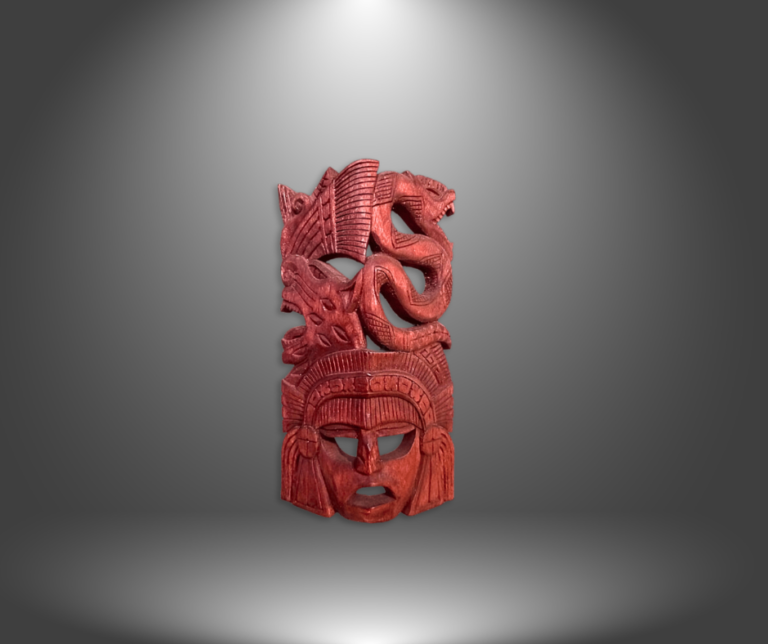An Aztec-style mask, a type of art commonly associated with the Aztec civilization’s rich cultural heritage, flourished in central Mexico before the Spanish conquest.
Aztec masks were often made from various materials, including wood, stone, and even precious metals and stones. They frequently feature intricate designs and symbolic imagery reflecting the Aztec religious beliefs, mythology, and societal values. Masks like this were used in various contexts, including religious ceremonies, rituals, and performances.
- The mask in the image showcases several distinctive elements:
- The prominent face with stylized features possibly represents a deity or a significant figure in Aztec mythology.
- Including what appears to be a serpent is a common motif in Aztec art. The serpent is often associated with Quetzalcoatl, the feathered serpent god who played a significant role in Aztec religion and cosmology.
- The headdress or headgear often signifies status, divinity, or specific attributes related to the depicted figure.
The detailed carving and high-relief techniques to create depth and dimension are characteristic of Aztec artistry. Such masks served as functional items in rituals and powerful symbols of cultural identity and religious belief.
This particular piece reflects the Aztec’s sophisticated craftsmanship and their deep connection to their mythology and spiritual practices. The mask’s design and iconography would have conveyed specific meanings and stories to those familiar with Aztec culture.
Additional Details
Dimensions: Height 26 cm, Width 15 cm
Material: wood
Year: Vintage
Origin: Mexico
